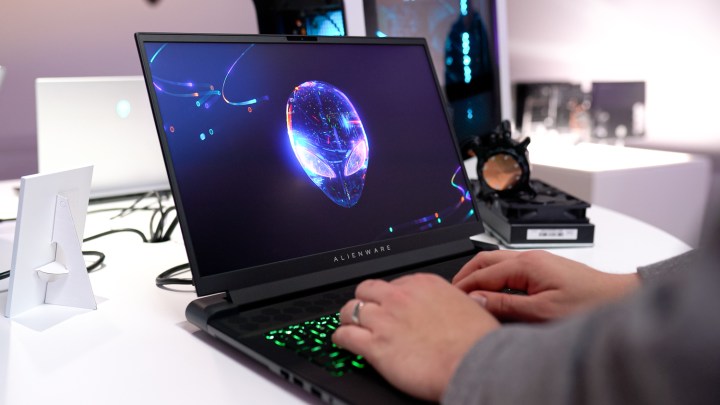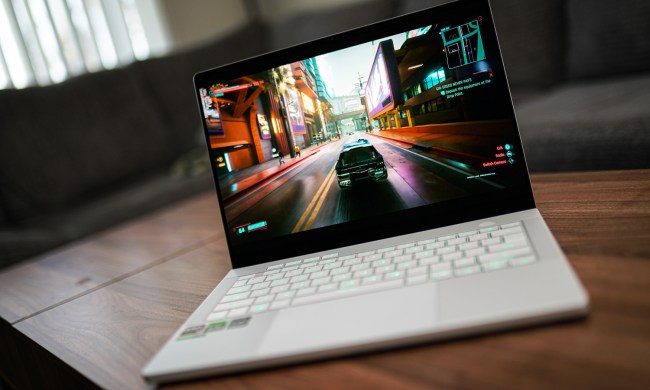

On the whole, Computex 2024 certainly did not disappoint. We’ve seen new processors from both Intel and AMD , Nvidia’s AI gaming companion and small form factor GeForce guidelines , and handhelds like the ROG Ally X . But do you know the one thing we haven’t seen much of at all? Gaming laptops made purely for gamers.
Don’t get me wrong, I’m as fascinated by AI as much as any tech maniac, but I can’t help but feel that laptop gamers have been overlooked this year. The worst part? It may be many, many months until that situation is remedied.
Gaming laptops? What gaming laptops?

We’ve seen some interesting laptops on the show floor at Computex. For instance, there’s the Asus ProArt P16 with the brand-new AMD Ryzen AI processor that sounds like a marvel for creators. Asus also has a new iteration of the ROG Zephyrus G16, this time decked out with the Ryzen AI 9 HX 370. Then there’s the aptly-named MSI Stealth A16 AI+ that comes with — you guessed it — a Ryzen AI CPU. It’s nice to see AMD feature more heavily in laptops (that wasn’t always the case), but that still doesn’t make up for the lack of gamer-centric options to choose from.
This year, it’s all about AI. Gamers seemingly need to wait their turn.
Microsoft’s Copilot+ changed the laptop game in an unexpected way , leaving Intel and AMD scrambling to keep up with Qualcomm’s Snapdragon X Elite chip. The “keeping up” comes down to the power of the neural processing unit (NPU) inside their respective chips; to qualify for Copilot+, the NPU needs to be at 40 trillion operations per second (TOPS) or more. Both AMD Ryzen AI and Intel Lunar Lake qualify, which should make for a thrilling race to the best AI laptop.
And yet, I can’t help but feel like it’s been a long time since we’ve seen a refresh of gaming laptops across the board. And what I mean is a laptop decked out with the latest discrete graphics card and a gaming CPU. Something built with the goal of reaching the highest possible frame rates. With solid thermals, a lot of RAM, and plenty of storage. Those laptops exist, and they’re very much still worth buying , but announcements of real next-gen gaming laptops have been pretty scarce.
But there’s a good reason why we’re not seeing anything new on the gaming laptop front. It’s not because the big gaming brands don’t want to sell gaming laptops. It’s because they know that without the performance jump provided by new GPUs, it’ll always be hard to justify.
Not much has changed

The truth is that the GPU market has been looking pretty bare lately. On one hand, it makes sense — we’re nearing the end of this release cycle. However, this period of drought has been far longer for laptop users than for those who game on a desktop PC.
Let’s take Nvidia as an example. It initially unveiled its mobile RTX 40-series GPUs during CES 2023, which was a year and a half ago. The first laptops with RTX 40 GPUs then started to appear on the shelves in early February, and many are still readily available to this day. That’s a long time for a piece of tech to stay current, especially when you consider how long it’ll be before they’re truly replaced.
The laptops that were unveiled during Computex 2024 still come with RTX 40-series GPUs, with the top option being the RTX 4070M, meaning midrange to upper-midrange graphics performance.
None of the latest cards made it to laptops, and at this point, they never will.
AMD is almost in the exact same boat. Having launched its RX 7000M and RX 7000S GPUs during CES 2023, it now has five models out in total: the RX 7900M, RX 7600M XT, RX 7600M, RX 7700S, and the RX 7600S. However, AMD GPUs in laptops are still difficult to come by, and you’re much likelier to find a gaming laptop with an AMD APU than you are to spot one with a discrete AMD GPU. Intel is … well, Intel. It feels like it’s been forever since Arc Alchemist was first announced, but laptops with Intel’s discrete GPUs are few and far apart — not to mention quite outdated by this point.
Both AMD and Nvidia dipped back into their respective desktop lineups later on in the generation. Nvidia said sorry to gamers with the excellent RTX 40 Super series, and AMD launched the excellent RX 7900 GRE . But none of these cards made it to laptops, and at this point, it’s far too late to think they will.
It’s not hard to see where all the resources and attention are going. AI is the talk of the town, and lately, it’s where the money’s at. I wouldn’t complain if we got more of those not-strictly-AI gaming laptops this year, but when it comes down to it, what kind of upgrades could laptop makers offer us this time around? It could be anything from a better screen to a chassis redesign, but those are rarely the type of things that cause people to want to upgrade. In the end, it’s about performance, and that’s where the hole has been left.
The worst part of it all is that now, with Computex behind us, we can sort of estimate when bigger laptop upgrades might arrive — and it’s not good news.
We’ll have to wait

If this gaming laptop drought can be attributed to a lack of new, exciting hardware hitting the market, when can we expect things to change? Well — get comfy. We might have to wait quite a long time.
Many gamers are eagerly awaiting announcements from Nvidia, AMD, and Intel regarding next-gen GPUs, and no wonder, seeing as each manufacturer is said to be cooking up something big. Nvidia has its RTX 50-series, AMD is readying RDNA 4 , and even Intel is finally making a comeback with Arc Battlemage .
By many accounts, these GPUs are said to be launching this year. But will their laptop versions arrive alongside them? Not likely. There’s no harm in hoping that they might, but if Nvidia and AMD repeat their previous patterns and follow the current rumors, they’ll start off by launching desktop GPUs. In Nvidia’s case, that might only mean the RTX 5080 and the RTX 5090 this year — and following up with mobile cards a few months later. If we assume that the announcement will drop during CES 2025, that will mark two full years from one launch to the next.
By today’s standards, that’s a really long time. Laptop gamers have every right to feel neglected at this point. It may even be an additional few months before we see these laptops available to buy.
Gaming laptops won’t be abandoned forever. It’s clear that both AMD and Nvidia pay more attention to the AI, data center, and enterprise part of the market right now, and while that’s unlikely to change, gaming laptops still play an important role in the market.
In theory, there’s no harm in picking up a so-called “AI PC” and using it for games.
And besides, it’s not all bad; Gamers got a few morsels here and there at this Computex. For me, the most interesting announcement was Nvidia’s Project G-Assist . I was skeptical about it initially, but having seen the demo, I’m on board. As someone who likes to min-max in games, there are certain titles where keeping a search engine open on my second screen is pretty much mandatory. Perhaps in a few years, all I’ll need to do is ask Nvidia’s AI instead of having to Google it. But until then, I really hoped to see some more exciting gaming laptops at Computex 2024, and I can’t help feeling slightly disappointed.
I know that AI is where the money is right now. Moreover, that stuff can actually be useful even for those of us who don’t plan to run generative AI models locally at all hours of the day. In theory, there’s no harm in picking up a so-called “AI PC” and using it for games. Heck, even the new Snapdragon X laptops have some decent integrated GPUs.
But what if you want a laptop where all the bells and whistles are centered around gaming as opposed to AI? Brace yourself, because we’ve all most likely got some long months ahead before any such laptop makes it to the market.



